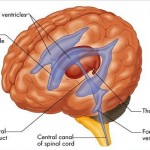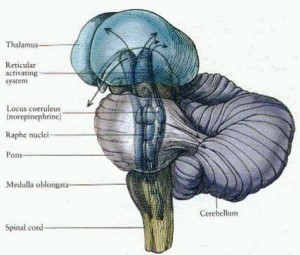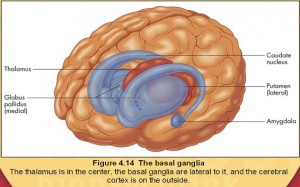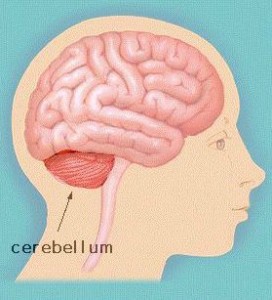In the Aitareyopanishad it is stated that the Self or Atman entered the body through the crown of the head through the suture of the skull. The Atman having entered the body through the crown of the head, rests in the pineal gland in the third ventricle of the brain. The pineal is the seat of the soul, it is the seat of cosmic consciousness which is termed Mahalinga in Shiva-yoga. The soul in the pineal is directly connected with the eyes through the optic thalamic nerve. In the waking state of consciousness the soul rests in the eyes. Shiva-yoga starts directly from the soul through the eyes and realises the soul residing in the pineal through knowledge of identity. The scripture says “Atmanam Atmana viddhi” – “Know the Soul by the soul”. Shiva-yoga fulfills this condition literally through the technique of opening the pineal gland.
H.H.Shri Kumarswamiji explains this significance of Shiva-yoga in the following article.
Shiva-yoga, the secret name of which is Animisha-yoga, has been addressed as Prachina-yoga or the ancient Yoga in the Upanishads. There is a definite mention of Prachina-yoga in the Taittiriya Upanishad. Shiva-yoga has been addressed as the ancient Yoga because it belongs to the chalcolithic age and because it reveals the hidden method of passing through the foramen of Monro. In the Kena Upanishad it is said: “Thus we have heard from the ancient seers who explained that to us”.
The Taittiriya Upanishad proclaims thus: “O son of Prachina-yoga, do thou meditate upon Him who resides in Agni as Bhuh, in air as Bhuvah, in the sun as Dvah, in Brahman as Maha”. Agni, Surya, Vayu and Mahat are not mere cosmogonic terms but they are pregnant with occult meaning. Agni is thalamus which is situated in the first ventricle of the brain. Surya is corpus stratum which resides in the second ventricle of the brain. Vayu is medulla oblongata which is seated in the forth ventricle of the brain. Maha or Mahat is the pineal gland which has its seat in the Brahmarandhra, in the third ventricle of the brain. In this context it is pertinent to remark that Shiva-yoga Darpana, a valuable Yoga manual written in Sanskrit, mentions four ethers in the head centres and these ethers are none other than the four ventricles in the brain.
Neural tube develops into various parts of brain
Image Courtesy — http://www.neuroskills.com/tbi/bcerebel.shtml
The brain is an enlargement of the front end of the neural tube which rapidly grows into three bulb-shaped swellings – forebrain, mid brain and hinder brain. These three swellings go on increasing in size until the growing brain becomes bent upon itself in a number of folds. The original neural tube was a hollow structure, that is why the brain and spinal cord are also hollow. The cavity of the old neural tube persists in the cerebral hemispheres as two cavities ” the lateral ventricles which are continuous below with a third ventricle. The third ventricle lies between two large and important masses of nerve cells which develop at the base of the forebrain called thalami.
From left to right – 4 Ventricles in the brain, Medulla Oblongata, Cerebellum – Image Courtesy — http://www.neuroskills.com/tbi/bcerebel.shtml
The mid brain remains fairly small; it consists mainly of a large stalk of nerve tissue branching into two above and connecting the two cerebral hemispheres with the hinder brain. A passage runs through the mid brain, a tiny canal which is called the aqueduct of sylvius and connects the third ventricle which lies in the forebrain with the fourth ventricle lying in the hinder brain. From the hinder brain a number of important structures have developed. Its upper part forms the pons, a broad bridge of nerve fibres running transversely to connect the two hemispheres of the cerebellum which have sprung up. The lower part of the hinder brain constitutes the medulla oblongata which is continuous below the spinal cord. If we follow the spinal cord upwards we find that it broadens out above to form the medulla oblongata. This small but important structure contains the vital centres which govern the vital activities of the body such as breathing and the beat of the heart which are to be found in the grey matter forming the floor of the fourth ventricle. The nerve fibres which carry the messages from these centres to the organs leave the medulla in the vagus nerves. In addition to the vagus nerve the medulla gives rise to several other pairs of nerves, in fact, of the twelve pairs leaving the brain no less than eight take origin from it.
Picture showing Vagus Nerve
Image Courtesy — www.mayoclinic.org/ epilepsy/options.html, http://www.classicvocal.co.kr/resource/respiratory_system.htm
The respiratory act is under the control of the vagus nerve which has two sets of fibres – afferent and efferent. The stimulation of the first stops exhalation and produces inhalation, while the stimulation of the second does the reverse. These fibres are excited to action by the alternate collapse and distension of the air vesicles of the lungs where the vagus terminations are situated. Vagus is the only nerve which is composed of motor and sensory fibres both efferent and afferent. The efferent or inhibitory are anabolic in action, while the afferent or acceleratory ar catabolic in action. The afferent and efferent fibres have their nerve endings in thalamus and corpus stratum which are known as Agni and Surya in Yoga science. Thalamus is a mass of grey matter at the base of the brain; corpus stratum is also a mass of grey matter extending into the ventricles of the brain. The afferent fibres of the thalamus are described as the flames of fire. Yes, it is true: the afferent fibres are the cerebral sensory nerves which are like fire carrying energy of impressions from the outside world to the chief sensory centre ” the thalamus. The mingling of the afferent fibres with the efferent fibres of the corpus stratum is suggestive of the nature of vegal energy that galvanizes into activity the dormant corpora quadrigemina situated behind the pons as four swellings which are companions to each other. Thalamus and corpus striatum are Agni and Surya (fire and sun) in Hatha-yoga terms. They are will and intuition in Raja-yoga terms and in Shiva-yoga terms they are Ishtalinga and Pranalinga.
From left to right – Thalmus in the brain, Corpus Straitum, Cerebellum
Image Courtesy — http://www1.york.org/psych/images/thalamus.jpg, http://user.syu.ac.kr/@Hc/img/Thalamus.jpg>
The importance of the thalamus and corpus stratum has been emphasized recently through discoveries made. Thalamus has a strong influence on the activities of the anterior pituitary while the corpus straitum exerts its influence on the posterior pituitary. The pituitary is of great concern to the Yoga discipline since it represents the focal point in physical tissue for the energies of the brow centre. The opening of this centre is inhibited by excessive emotional activities. It is gratifying to learn that thalamus and corpus stratum regulate the emotional activities and serve as an axis between the physical body and the etheric body.
The cerebellum is a structure consisting of closely packed folds of nervous tissue arranged in two fairly well defined lobes. It is found to have an outer layer of grey matter (cells) and an inner core of white matter (fibres) just like the cerebral hemispheres. The white matter in the centre of the cerebellum has an arrangement of its own; it spreads out from a central stem like the branches of a tree to which grey matter appears to form leaves. To this appearance the name of the Tree of Life has been given. The cerebellum is concerned with balance. We do not always maintain balance by a conscious effort. By far the greater part of the muscular adjustments are achieved without any conscious will. The cerebellum looks after those movements. It receives all the messages from the muscles which do not enter consciousness. It sends out messages, too, which travel out from it, down the stem of the Tree of Life and the spinal cord to the muscles by way of the spinal nerves.
Picture showing Cerebellum
Image Courtesy — http://www.cmgm.stanford.edu/~pbrutlag/portfolio/jib/utest/mm/text.html
If we study this Tree of Life deeply, it is found that the germplasm is possessed of immortality, that is, and immortal self. No limits can possibly be set to the growth of this Tree. The never ceasing unfoldment of this germplasm in material as well as spiritual aspect is the modern scientific thought which affords a fruitful analogy to the old Indian concept of Brahman or that which ever grows. The Tree of Life, having grown up to man in the mass, has also borne the fruits of sage, saint and mystic.
The medulla oblongata is the main spring of this Tree of Life. In it lie the nervous centres that govern such vital functions as the heartbeat and the automatic processes of breathing. Injury to it causes instant death. It rests on the occipetal bone and projects through the first part of the spinal canal. In the Aitareyaranyaka it is stated that Prana enters the body by the fore part of the feet. Then it proceeds higher up to the thigh, stomach, heart and head and rests in the medulla, having ramified into sight, hearing, mind, speech and vital breaths. Prana is the ridge-pole of the house known as the body. As the other beams rest on the main beam of the house, the body’s all other members of the body and their functions depend upon Prana. Prana is the hub in which the seven spokes of the universal wheel are fixed. The seven spokes are the seven nerves that go to the openings of the organs of sense. The sensations from these openings travel along the nerves to excite the chief sensory nerve centre, the thalamus which is situated at the base of the brain.
Medulla Oblongta
Image Courtesy — http://www.gen.umn.edu/courses/1135/lab/brainlab/brainlab.html
Medulla is the seat of Mahaprana or Mukhya Prana which means cosmic energy. it is a force that sustains all grades of life; it is a force that acts in man and animal and in forms and processes of nature. The essentiality of cosmic energy is that in it consciousness and power, knowledge and force are one: “What it is, it knows and what it knows taht it does and becomes.” This spirit of cosmic energy is Bhavalinga. Will and intuition are the twin aspects of the cosmic energy. When egoistic consciousness emerges and intervenes, there is a disturbance and a false movement. Will becomes an impulsion ignorant of its secret motive and aim; knowledge becomes a dubious and partial ray not in possession of will but only striving to possess and inform it. This is because we are not in possession of our self, our true being, but we are in possession of ego. What we are we know not; what we know we cannot effect. Knowledge is real and action is in harmony only when they proceed naturally out of spirit of cosmic energy.
In the Aitareyopanishad it is stated that the Self or Atman entered the body through the crown of the head through the suture of the skull. Having rent open the place where the hairs are made to part having slit open the suture of the skull, he indeed entered the body by that door. This is called the door of division. This also is the place of rejoicing. The door by which the Atman enters the body is called vidriti or cut. It is distinct from the other openings like eye, ear, etc., which are the passages for other organs. They cannot afford the secret opening of joy. This door is intended for the Self alone and hence it is the door of bliss. For the self passing through at the time of death attains Kaivalya or aloneness and beatitude. The Atman having entered the body through the crown of the head, rests in the pineal gland in the third ventricle of the brain. The pineal is the seat of the soul, it is the seat of cosmic consciousness which is termed Mahalinga in Shiva-yoga. The soul in the pineal is directly connected with the eyes through the optic thalamic nerve. In the waking state of consciousness the soul rests in the eyes. Shiva-yoga starts directly from the soul through the eyes and realizes the soul residing in the pineal through knowledge of identity. The scripture says “Atmanam Atmana viddhi ” – “Know the Soul by the soul”. Shiva-yoga fulfills this condition literally through the technique of opening the pineal gland.
This is the significance of Shiva-yoga.
– OM SHANTI | OM SHANTI | OM SHANTIHI –
This article ‘The Significance of Shiva-yoga’ is taken from H.H.Mahatapasvi Shri Kumarswamiji’s book, ‘Technique of Opening the Third Eye’.












